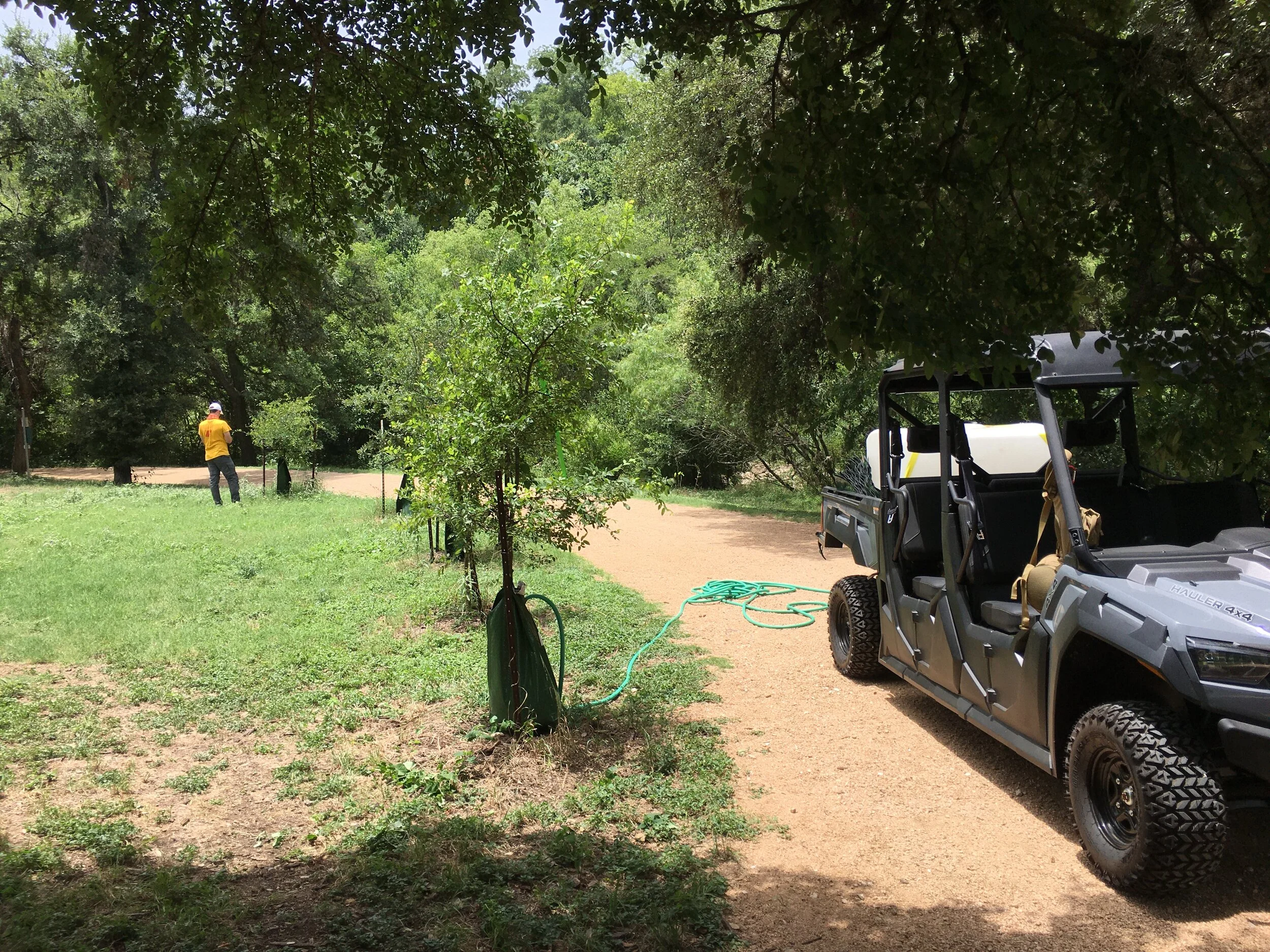Summer months are harsh for all of us, especially for trees. But the big question is, why do some of the big trees that have lived in the park for so long need help? The answer is climate change.
As you probably have already noticed, the effects of climate change have started to show in Texas. Just as the name implies, the climate that shapes the ecosystem of Pease Park is changing. Historically, the park fell on the boundary between the Blackland Prairies on the east and an Oak Savanna on the west; this is why you can find both Ashe Juniper and Live Oaks together in shallow limestone soils!
But as the climate shifts, the next few decades could look very different in Pease Park. According to the University of Maryland, central Texas could look a lot more like Laredo. The environment would be much more arid and many of the iconic trees such as live oaks would struggle or even die out. Because of this massive shift, it is important that we do what we can to prepare for the changes ahead.
In the meantime, to support the park and keep it healthy for everyone who uses it, Pease Park Conservancy is putting in place a tree care program to keep the thirsty trees happy and healthy. We have identified the most at-risk trees, spanning from Live Oak Meadow on the south to the Mystic Raven sculpture on the north.
The trees that show signs of bare limbs, damage to the trunk or other major limbs, or are young trees still trying to get a foothold, have been marked with a green ribbon and added to our GPS interactive map. We are installing sixty (60) slow-watering TreeGator bags around our most vulnerable trees. Each bag holds fifteen (15) gallons of water, and we are refilling the bags weekly using our new 4x4 Cushman vehicle.
Please leave the bags in place for the health of the trees, and if you see us driving by with a big water tank, be sure to say hello.
You can check out the Conservancy’s Interactive Summer Tree Care Map here.
If you want to see what climate might feel like in sixty years, check out this link to the interactive map developed by The University of Maryland.






